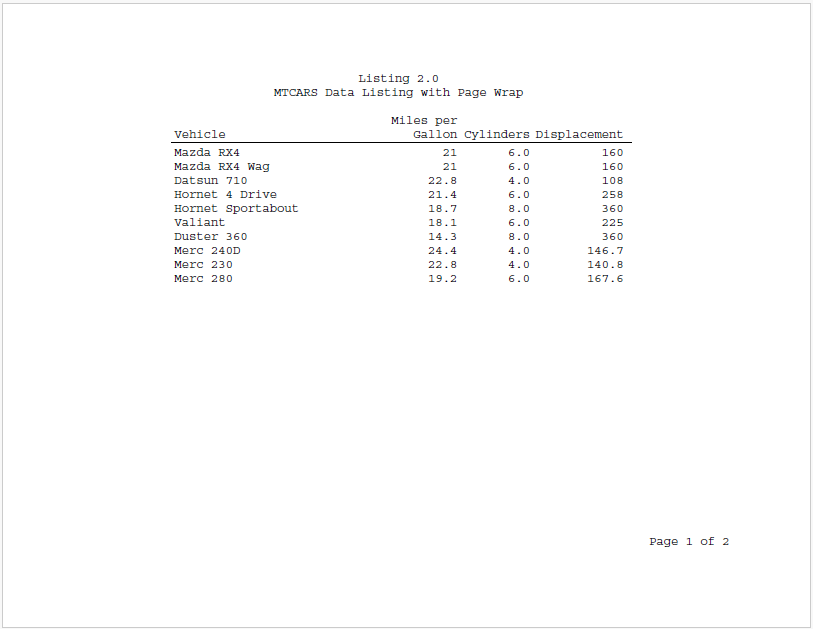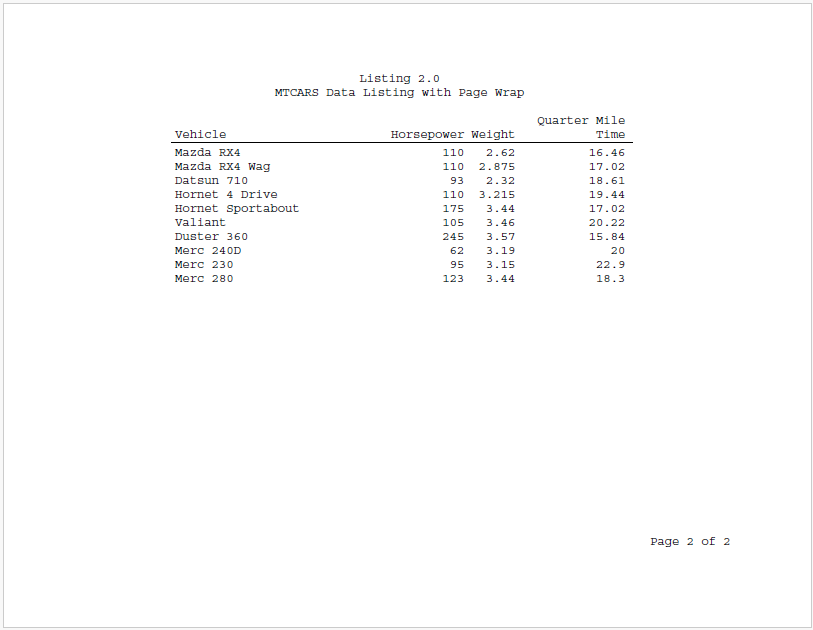Handle Wide Tables with Page Wrap
Page wrapping will occur automatically if the table width exceeds the
available page width. But page wrapping can also be controlled using the
page_wrap parameter on the define() function.
Below is an example. Also note the use of the id_var option
to cause the vehicle column to be retained on each wrapped page.
library(reporter)
# Create temp file name
tmp <- file.path(tempdir(), "example6.pdf")
# Prepare data
dat <- mtcars[1:10, ]
dat <- data.frame(vehicle = rownames(dat), dat)
# Define table
tbl <- create_table(dat, show_cols = 1:8) %>%
define(vehicle, label = "Vehicle", width = 3, id_var = TRUE, align = "left") %>%
define(mpg, label = "Miles per Gallon", width = 1) %>%
define(cyl, label = "Cylinders", format = "%.1f") %>%
define(disp, label = "Displacement") %>%
define(hp, label = "Horsepower", page_wrap = TRUE) %>%
define(drat, visible = FALSE) %>%
define(wt, label = "Weight") %>%
define(qsec, label = "Quarter Mile Time", width = 1.5)
# Create the report
rpt <- create_report(tmp, output_type = "PDF",
font = "Courier", font_size = 12) %>%
titles("Listing 2.0", "MTCARS Data Listing with Page Wrap") %>%
set_margins(top = 1, bottom = 1) %>%
add_content(tbl) %>%
page_footer(right = "Page [pg] of [tpg]")
# Write the report
write_report(rpt)
# file.show(tmp)

Next: Example 7: Page By